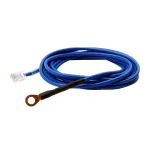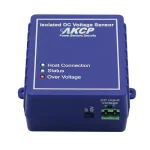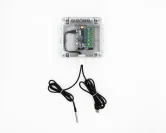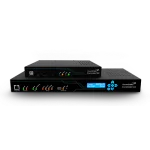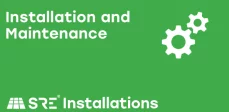Most uninterruptible power supplies include automatic battery testing which typically takes place every 24hours and is a very short-term test of the entire battery set connected. Whilst this gives a good indication as to the state of the batteries we also recommend individual battery block testing during a preventative maintenance visit using a conductance measuring handheld battery tester. Results can be recorded over each visit and compared to identify weak battery blocks. Over several visits handheld UPS battery testing provides a very accurate picture as to the state of the batteries and their health.
UPS Battery Monitoring Systems
A UPS battery monitoring system provides continuous tracking of battery performance, capturing vital data to forecast health and longevity. By using an advanced UPS battery management system, early detection of battery issues is possible, enabling proactive maintenance to prevent unexpected failures. This monitoring approach extends battery life, reduces operating costs, and avoids unnecessary replacements while ensuring reliable power for critical applications. Ideal for uninterruptible power supplies, energy storage, emergency lighting, standby generators, and security systems, a UPS battery monitor is essential for maintaining peak performance in backup power solutions.
-
Applications (40)
- Temperature & Humidity (30)
- Water Leakage Detection (26)
- Server Rack Monitoring (28)
- Hardwired Ethernet Devices (28)
- Wi-Fi Connectivity Units (8)
- Wireless Devices (13)
- Narrowband IoT Devices (4)
- GSM / LTE Comms (7)
- Battery Monitoring (7)
- Power Monitors (28)
- Security Monitors (26)
- Branch Circuits (2)
- Data Centres (7)
- Data Loggers (11)
- Data Aquisition Systems (11)
- Laboratories (18)
- Pharmaceutical (18)
- Accessories (159)
Battery Monitor System Product Selection Table
| Product | Battery Monitors | Individual Battery Blocks | Alerts | Predictive | Battery Block | Battery String | Environmental |
|---|---|---|---|---|---|---|---|
| PowerShield8 | Yes – cabled | Yes | Yes | Yes | DC Voltage, Ripple Voltage, Ohmic, Temperature | DC Voltage, Current, Ripple Current | Ambient Temperature, Humidity |
| Enee.io eBMS | Yes – wireless | Yes | Yes | Yes | DC voltage, temperature | DC voltage, temperature | – |
| AKCP Plug-in Sensors | Requires a sensorProbeX+ base unit | Yes | Yes | – | DC voltage, temperature, current load | – | Additional plug-in sensors for temperature & humidity, and water leakage |
The battery monitoring products available from Server Room Environments include monitoring systems specifically designed and installed for battery sets (PowerShield8 and Enee eBMS) in critical power applications and plug-sensors for battery monitoring for use with more general environmental monitoring devices (AKCP) in server room and data centre environments.
Monitoring UPS Batteries
Monitoring batteries on a regular basis can provide important data from which to determine charging issues or when a battery block or battery set should be replaced. Battery failures tend to follow a bath-tub curve. Early installation failures for lead acid batteries (VRLA, LA and stationary) and NiCd batteries are rare and may be caused by manufacturing defects or damage (shorts) during the installation process. End-of-working life failures are more common with data centre industry reports citing that that over 80% of uninterruptible power supply failures are due to battery issues. Whilst a battery may appear to be ‘health’, its capacity can decrease rapidly when placed under load as in the case of a mains power supply failure. UPS systems will generally test their batteries on a regular basis (every 24 hours), but the test is of a short duration and for the complete battery set rather than individual battery blocks.
Uninterruptible Power and Energy Storage Systems – Replacement UPS Batteries
Lead acid batteries tend to be of the 5 year or 10-year design life. This means that replacement should take place within years 3-4 and 7-8 according to battery manufacturer recommendations. Their design life is based not just on age but on the ambient temperature they are installed within (20-25⁰C is recommended) and the number of complete charge/discharge cycles (typically 300-400). In a temperature-controlled environment, with minimal usage, the working life of lead acid battery sets can be expected to beyond their predicted design life. Not only is this beneficial to the environment but also operational budgets (OPEX) which tend to cover replacement battery costs.
Handheld Battery Testing Solutions
Lead acid UPS batteries can be tested using a hand-held battery tester as part of a UPS preventative maintenance visit. Sites either specify once or twice a year for a PM visit and in between this period (6-12 months). Whilst this is better than no individual battery block testing, it can miss fast deterioration in a battery block or set of cells which could lead to a DC voltage string collapse when placed under load. Collected data can also indicate issues with electrical equipment chargers that may not be alarmed and picked up by monitoring systems including BMS panels.
Battery Monitoring Measurement – Voltage and Temperature
Most battery testing systems will monitor and measure a range of factors relating to the battery including DC voltage and temperature for each individual battery cells. Additional cell measurements include cell internal resistance (impedance) and ohmic measurement. Environmental monitoring may also be available including local room ambient temperature and humidity using additional sensors. The data collected allows for comparison between historical measurements and other installations for trend analysis.
UPS Battery Systems and Emergency Lighting Battery Systems
In a UPS system the battery set is there to provide critical power coverage when a mains power supply failure occurs to automatically start-up a standby power generator or provide sufficient runtime for the IT servers to be safely shutdown. A UPS battery can fail instantly as can the automotive lead acid battery in the starter circuit of a standby generator. In emergency lighting and energy storage systems, using lead acid batteries, the same type of failure can occur. The only way to ensure the continuous healthy state of a battery set or individual battery is 24/7 monitor with data logging using a battery monitor.
24/7 Battery Management Systems
24/7 battery monitors use battery data sensors connected to individual battery blocks. They collect battery and log battery data on a continuous basis for collection via hubs and collectors and analysis in product specific software packages and Apps. These are either available locally over an IP network, web-based portal or mobile network.
For more information on the right battery monitoring system for your installation and the battery installation & testing services available from Server Room Environments, please contact our Projects Team.

Earn SRE points on all online purchases with double points on selected products





























